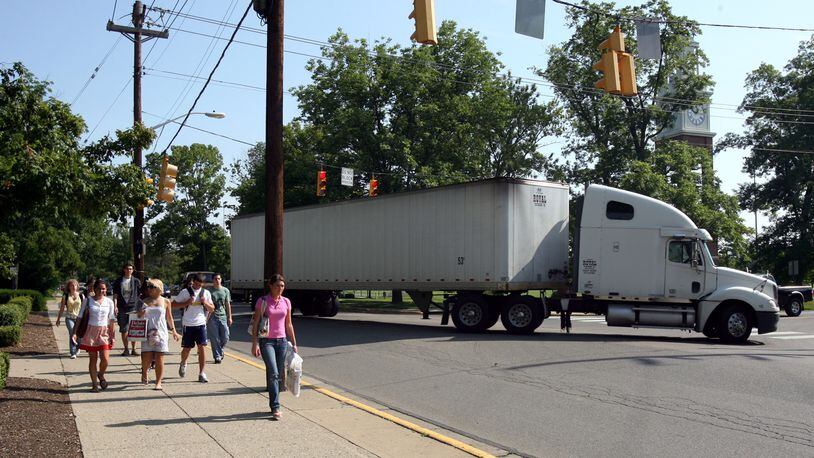The second is taxing entities, such as the Talawanda School District, will not benefit from the entire increased property value for 10 years, although they will keep receiving taxes based on the value of the land itself.
City Manager Doug Elliott stressed those two points in both presentations to Council at their May meetings as the series of five ordinances moving the TIF proposal into reality received their two readings. Approval came on 6-0 votes for each ordinance May 16, with Council member Bob Blackburn unable to attend the meeting.
The TIF funding was part of a 2006 agreement between the city and 4-Leaf Development, during the year before Elliott was hired as city manager.
“I came here in 2007 and this was already in place, ” he said, adding the financial arrangement may not be ideal but the city is locked into it by the agreement. “There is a risk. If property values go down, there would be a problem. They could go up.”
Approval of five ordinances was necessary because one was defined as a Commercial TIF to incorporate an area of the development for duplexes and multi-family residences. The other four were Residential TIFs for groups of single-family units — one with four such units and three with six.
The five districts will involve a total of 26 parcels of land and be for a 10-year period for 75 percent of the increased property tax. Because it will be a 75 percent TIF, Elliott said, they do not need to seek approval from those other taxing entities but merely inform them of the plan.
The route the road will take through the development would follow approximately that once proposed for a connector to Route 73, but that is no longer even possible so Elliott and Mayor Kate Rousmaniere both emphasized it is a dead-end roadway inside the development and will not be extended.
“This is not a connector. It is too narrow, ” Elliott said. “If it were to continue we would need to acquire private property. This is not even half of the length.”
The mayor is confident the street will end with the development under consideration, although there will be skeptics.
“As soon as we put a shovel in the ground, people will call it a connector, ” Rousmaniere said, emphasizing Elliott’s point that it will not get any longer, in part because an extension would take it through Springwood subdivision.
In his slide presentation, Elliott admitted the portion of the road being built does generally follow part of the original proposed route for a connector but that is also part of the 2006 agreement. He noted it calls for 4-Leaf being permitted to build a dedicated road within the development in that area, if connector conditions fail.
The city manager told Council during discussion of the TIF ordinances there was no way of knowing what the income would be from that funding option because the procedure is to approve the districts and then send that to the county auditor, who will then determine the value which will relate to the anticipated tax income.
“I don’t believe we will be able to build the whole roadway with this money. It may be done in phases, ” he said. “We will get the money and build out the road as far as we can.”
Elliott presented the following timeline for the project:
· Establish Five TIF Districts by Ordinance, May 2017
· File Application for Real Property Tax Exemption, July 2017
· Obtain Taxable Value from County Auditor, Feb. 2018
· Complete Final Engineering of Roadway, 2017- 2018
· Receive Bids for 1st Phase of Roadway, 2017- 2018
· Issue General Obligation Debt (Notes or Bonds), 2018
· Begin Construction of 1st Phase of Roadway, 2018
About the Author
